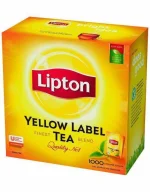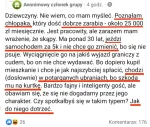Aktywne Wpisy

W tym wątku dodajemy rzeczy które kiedyś były uznawane za prestiżowe/marki premium
#polska #lata90 #wykop30plus #ekonomia #pytaniedoeksperta #pytanie
#polska #lata90 #wykop30plus #ekonomia #pytaniedoeksperta #pytanie


WielkiNos +213
Jak namówić chłopa żeby przepierdzielał całą wypłatę na drogi samochód i modne ciuchy oto jest pytanie.
#zwiazki #logikarozowychpaskow #niebieskiepaski #programista25k #samochody #problemypierwszegoswiata
#zwiazki #logikarozowychpaskow #niebieskiepaski #programista25k #samochody #problemypierwszegoswiata






vaccine termed BNT162b2 (V8). COMIRNATY and BNT162b2 (V8) have identical amino
acid sequences of the encoded antigens but COMIRNATY includes the presence of
optimized codons to improve antigen expression.
https://www.fda.gov/media/151733/download
Induction of S protein-specific immune responses is key to virus neutralization. Four different LNP-formulated, nucleoside-modified mRNA (modRNA) vaccine candidates targeting the S protein were evaluated in nonclinical rat studies as part of the joint Pfizer-BioNTech COVID-19 RNA vaccine development program. Using the same mRNA backbone, two candidates encoded the RBD (BNT162b1 and BNT162b3), while the other two encoded the full-length S protein in its pre-fusion conformation (BNT162b2 [V8] and BNT162b2 [V9]). BNT162b2 (V9) is the clinically approved Pfizer-BioNTech mRNA vaccine against COVID-19. It is a codon-optimized version of BNT162b2 (V8), which encodes for identical amino acid sequences but with improved protein expression and immunogenicity.
The mRNA component of the BNT162b vaccine candidates is encapsulated into LNPs, which protect the RNA from degradation and enable transfection of the RNA into host cells after intramuscular (IM) injection [22]. The LNP used for the vaccine candidate was composed of four different lipids: cholesterol, an ionizable amino lipid, a PEGylated phospholipid, and a phosphocholine lipid. mRNA-lipid nanoparticles form upon the mixing of the RNA with the dissolved lipids, encapsulating the mRNA [23]. After injection, the mRNA-LNPs are taken up by host cells (e.g., muscle cells, tissue-resident, or recruited antigen-presenting cells), where the mRNA is released into the cytoplasm [6,13]. mRNA-LNPs can also directly reach immune cells in the draining lymph nodes via lymphatic vessels. Using the host cell machinery, the encoded S antigen is translated, and the expressed protein is presented at the cell surface, released, or presented by major histocompatibility complex (MHC) I or II (depending on the cell type) where it can initiate antigen-specific and protective humoral and cell-mediated immune responses [6,24]. The distribution of the mRNA-LNPs determines the mRNA expression pattern [25,26], with the majority of the LNP remaining at the injection site after IM injection. LNP components are metabolized and recycled or eliminated.
All four vaccine candidates were evaluated in two repeat dose toxicity studies in Wistar Han rats, which included a 3-week recovery phase. The objective of these studies was to evaluate the safety and immunogenicity of the vaccine candidates. This manuscript details the nonclinical study data for the four candidates and demonstrates the safety of this mRNA-LNP platform in the rat.
https://www.ncbi.nlm.nih.gov/pmc/articles/PMC9965811/
COMIRNATY and BNT162b2 (V8) Similarities and Differences:
Both vaccines have identical amino acid sequences for the encoded antigens.
COMIRNATY includes optimized codons to improve antigen expression.
Vaccine Candidates in Nonclinical Rat Studies:
Four LNP-formulated, nucleoside-modified mRNA vaccine candidates were evaluated in rat studies.
Two candidates encoded the RBD (BNT162b1 and BNT162b3), while the other two encoded the full-length S protein in its pre-fusion conformation (BNT162b2 [V8] and BNT162b2 [V9]).
BNT162b2 (V9) - Clinically Approved Vaccine:
BNT162b2 (V9) is the clinically approved Pfizer-BioNTech mRNA vaccine against COVID-19.
It is a codon-optimized version of BNT162b2 (V8) with improved protein expression and immunogenicity.
Period 1
Period 1 title Overall period
Is this the baseline period? Yes
Allocation method Not applicable
Blinding used Not blinded
Arm title Phase 1: BNT162b1 10 mcg dose: 18-85 years of age
Investigational medicinal product name BNT162b1
Worldwide total number of subjects: 46934
Country: Number of subjects enrolled
Germany: 500
United States: 36461
https://www.clinicaltrialsregister.eu/ctr-search/trial/2020-002641-42/results
Period 1 title Overall period
Is this the baseline period? Yes
Allocation method Not applicable
Blinding used Not blinded
Arm title Phase 1: BNT162b1 10 mcg dose: 18-85 years of age
Investigational medicinal product name BNT162b1
Pharmaceutical forms Injection
Routes of administration Intramuscular use
Dosage and administration details 10 mcg: 250 mcg/0.5 mL
Arm title Phase 1: BNT162b1 20 mcg dose:18-85 years of age
Worldwide total number of subjects: 46934
Komentarz usunięty przez autora
started 21500 21351
completed 6954 10428
Not completed 14546 10923
Physician decision 35 31
Death 67 68
Unspecified 9647 3608
Lost to follow-up 1089 1402
Although the study was designed to follow #!$%@? for safety and efficacy for 2 years after the second dose, given the high vaccine efficacy, ethical and practical barriers prevent following placebo recipients for 2
and subjects 12 to 15 years of age (Phase 3);
Number of subjects in